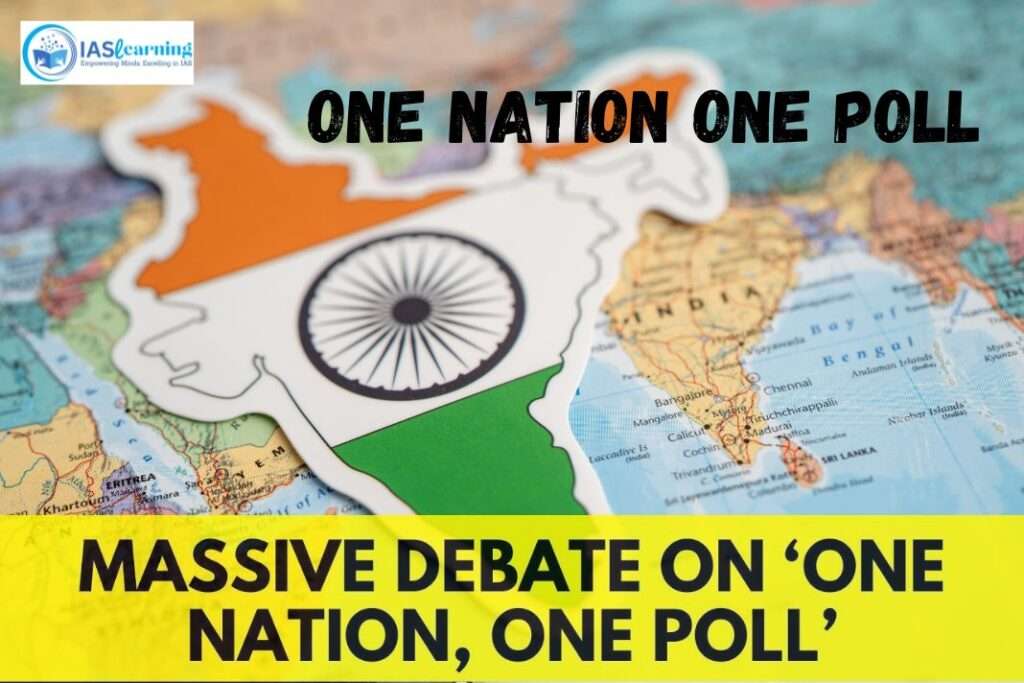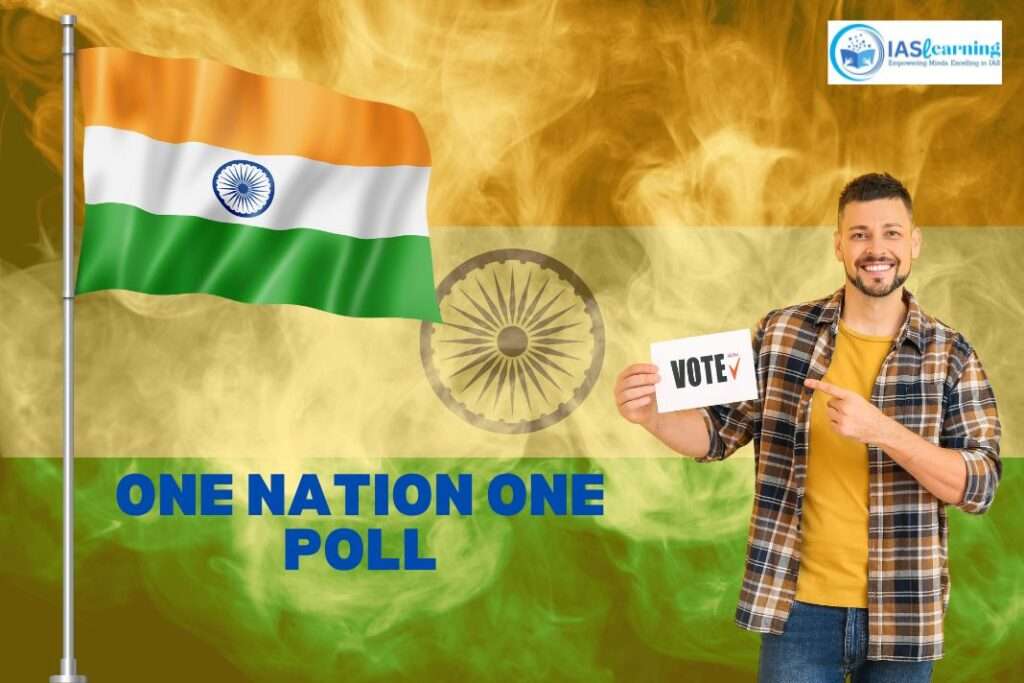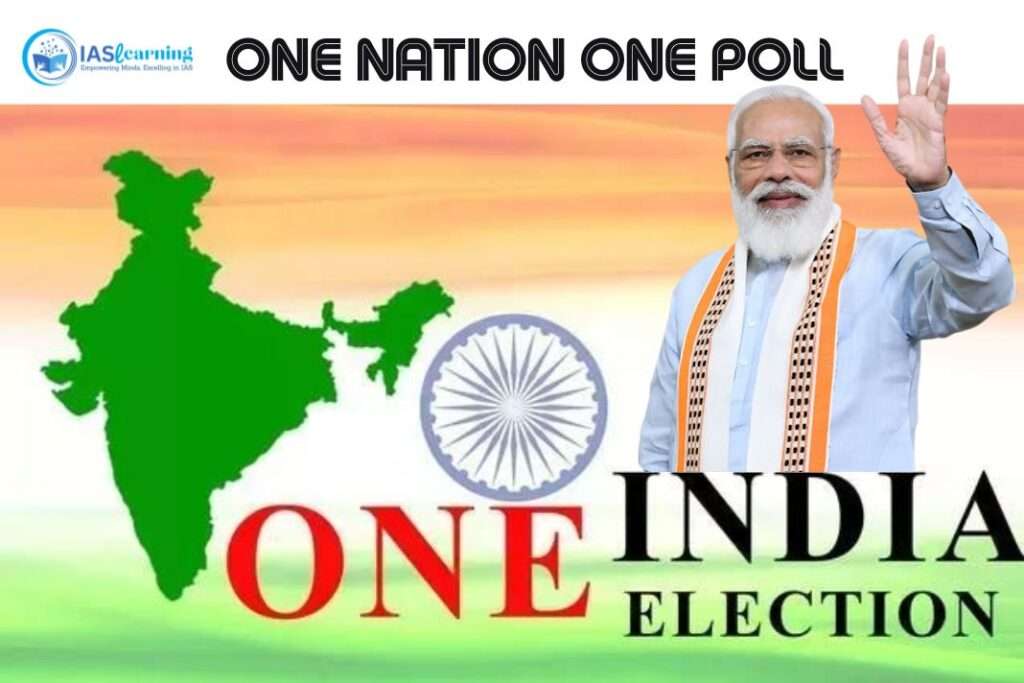Table of Contents
Introduction to One Nation,One Poll
The concept of “One Nation, One Poll” has gained significant attention in Indian politics in recent years. It proposes holding all elections in the country—general elections, state elections, and local body elections—simultaneously. Advocates argue that this could lead to various benefits, while critics highlight potential challenges.
The Pros of Simultaneous Elections
Simultaneous elections, often referred to as “One Nation,One Poll,” is a concept that has sparked both interest and debate in India’s political landscape. Advocates of simultaneous elections argue that it carries several potential advantages

Cost Efficiency
One of the most prominent advantages of simultaneous elections is the significant reduction in election-related expenses. Conducting separate elections at different levels of government, including general elections, state elections, and local body elections, can be financially burdensome. Simultaneous elections would streamline campaign expenditures, reduce the cost of logistics, and minimize the need for frequent voter mobilization efforts.
Governance Continuity
Frequent elections can disrupt the normal functioning of governments at various levels. With simultaneous elections, the government’s focus can shift from campaigning to governance without interruptions. This continuity in governance can lead to more stable and consistent policy implementation, benefiting the country as a whole.
Higher Voter Turnout
Voter fatigue is a common concern in countries with frequent elections. Simultaneous elections could address this issue by allowing citizens to vote for all levels of government on a single occasion. This convenience may encourage higher voter turnout, as citizens would only need to participate in elections once in a few years, rather than multiple times.
Reduced Politicization of Policies

Frequent elections often lead to the politicization of policy decisions, as political parties use policy announcements as campaign tools. In a scenario of simultaneous elections, there may be less incentive to time policy decisions for electoral gains. This could help maintain the integrity and objectivity of policy-making, focusing on the welfare of the nation rather than political expediency.
Streamlined Administration
Conducting elections at different times places a significant administrative burden on the Election Commission and various government agencies. Simultaneous elections would simplify the administrative process, making it more efficient and less resource-intensive.
Enhanced Policy Focus
With elections occurring less frequently, elected representatives and political parties may have more time to concentrate on policy formulation, development initiatives, and addressing long-term issues facing the country.

The Cons and Challenges
While the idea of simultaneous elections, often referred to as “One Nation, One Poll,” carries several potential advantages, it also comes with notable challenges and drawbacks. It’s essential to examine these cons and challenges before considering its implementation:
Complex Logistics
Conducting simultaneous elections in a vast and diverse country like India poses complex logistical challenges. Coordinating elections at various levels of government, involving millions of voters, candidates, and election officials, would require meticulous planning and execution. Managing the logistics of such a massive endeavor could be a daunting task.
Risk of Dominance
Simultaneous elections may risk overshadowing regional concerns and smaller parties. National issues and dominant national parties might take precedence, potentially marginalizing regional issues and smaller, regional political parties. This could lead to a less diverse and more centralized political landscape.
Constitutional Amendments
Implementing “One Nation, One Poll” would require significant changes to India’s constitution. The current system allows for elections at different levels of government at different times. Amending the constitution to allow for simultaneous elections could be a lengthy and contentious process, involving legal and political complexities.
Opposition from States
State governments may resist the idea of simultaneous elections, as it could undermine their autonomy and ability to choose their election timings. States often have unique political dynamics and may prefer to hold elections independently of the central government’s schedule. Gaining the cooperation and consensus of all states could be challenging.
Voter Engagement
While simultaneous elections aim to reduce voter fatigue, there is a concern that voters might not adequately engage with all levels of government in a single election. Voters may focus primarily on the national issues and candidates, potentially leading to less informed choices at the state and local levels.
Impact on Local Issues

Local body elections often address issues that are specific to particular regions or communities. Simultaneous elections may dilute the focus on these local issues, making it challenging for voters to express their preferences on matters that directly affect their communities.
Risk of Political Maneuvering
There is a risk that political parties may strategize differently in simultaneous elections. They might concentrate their resources and campaigning efforts differently, possibly leading to shifts in political dynamics and strategies.
International Examples
Global Practices
Countries like the United States and the United Kingdom hold simultaneous elections at various levels of government. These practices provide insights into the benefits and challenges of such a system.
United States
In the United States, simultaneous elections are a common practice. Every four years, the country conducts presidential elections, which coincide with congressional elections. Additionally, state and local elections often align with federal elections, resulting in a coordinated election process at multiple levels of government. This practice streamlines the electoral calendar and helps minimize voter fatigue.
United Kingdom
The United Kingdom follows a similar approach to simultaneous elections. General elections for the UK Parliament are typically held every five years. These general elections coincide with elections for local councils, police and crime commissioners, and various devolved administrations, including the Scottish Parliament and the Welsh Senedd. This synchronization of elections aims to reduce administrative costs and promote voter engagement.
Canada
Canada conducts federal elections for the House of Commons simultaneously with provincial and territorial elections. While the specific timing may vary, the principle of aligning elections at different levels of government is practiced to some extent across the country. This approach helps optimize resources and encourages citizens to participate in multiple elections during a single visit to the polling station.
Germany
Germany practices simultaneous elections for its federal parliament (Bundestag) and its regional state parliaments (Landtag). The country follows a fixed schedule for federal elections every four years, and many regional states align their elections with the federal cycle. This coordination ensures a cohesive electoral process and promotes political stability.
Australia
Australia conducts simultaneous federal elections for the Australian Parliament, which includes both the House of Representatives and the Senate. State and territory elections often coincide with federal elections as well. This synchronized approach allows voters to cast their ballots for multiple levels of government simultaneously, reducing the frequency of elections and associated costs.
These international examples demonstrate that simultaneous elections are a practical and effective way to streamline the electoral process, reduce costs, and encourage voter participation. While the specifics of simultaneous elections vary from one country to another, the overarching goal is to create a more efficient and cohesive electoral system that serves the interests of both citizens and the government.
Conclusion
The concept of “One Nation, One Poll” in India is a topic of extensive debate. While it offers several potential advantages such as cost savings, governance continuity, and increased voter turnout, it also faces significant challenges, including complex logistics, the risk of dominance, and the need for constitutional amendments.
The feasibility and desirability of simultaneous elections in India need careful consideration. It is crucial to strike a balance between the advantages and challenges while respecting the federal structure of the country and the diversity of regional interests. Public discourse, informed by international practices and expert opinions, should guide any decision regarding the implementation of “One Nation, One Poll” in India.
